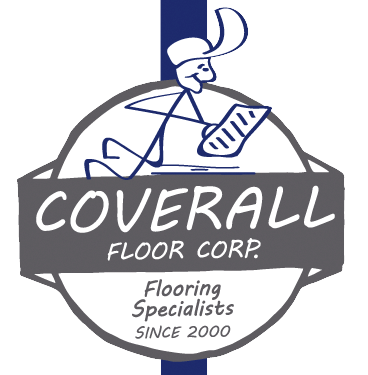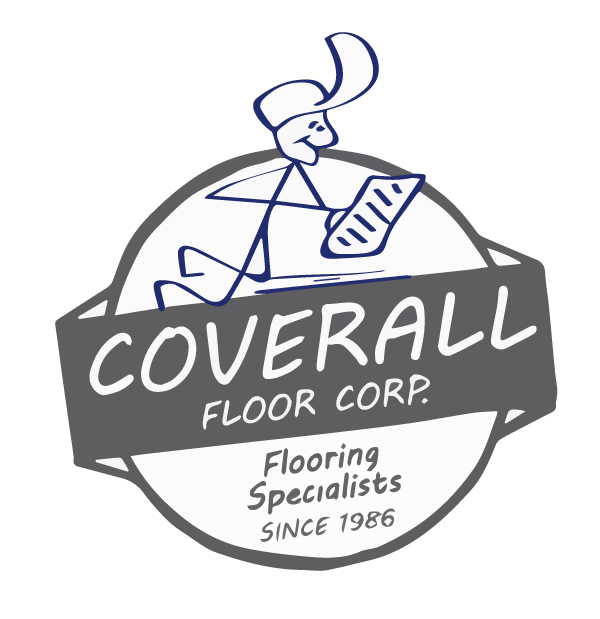Moisture Mitigation
![]()
Moisture Vapor Mitigation
What is Concrete?
Coating concrete with impermeable coatings or other floor surfaces that do not breath require special considerations to prevent failure.
With a concrete surface each slab has its own chemistry and profile of performance. It is this variance in concrete formula, placement, finishing, curing, and subsoil conditions that make its predictability of coating adhesion very elusive. This article will outline steps to avoid bond failures not associated with surface preparation. We are assuming that good preparation is well established and that concrete surfaces are cleaned properly and well profiled (roughened) for maximum surface area and good adhesion. Selecting and Specifying Concrete Surface Preparation for Sealers, Coatings, and Polymer Overlays.
Excess moisture in or below the concrete slab is the cause for a large percentage of coating failures on concrete. While moisture in concrete during the application of floor surfacings is an important criterion, it is not the ultimate cause of failure months or years later. Many epoxy materials can tolerate and bond to a concrete slab with a relatively high moisture content. It is the flow of moisture or moisture vapor, better described as moisture vapor transmission, that causes most adhesion problems. There are reported cases of bond failures on above grade slabs, but almost all are related to moisture vapor transmission rather than moisture content. The real area of greatest concern is concrete slabs-on-grade and how to dry out and/or minimize the vapor transmission.

Measuring Moisture Transmission
There are a multitude of tests used to establish moisture content and moisture vapor transmission. These include the Plastic Sheet Test (ASTM-D-4263), Calcium Chloride Test, and RH testing
The Plastic Sheet Test (ASTM-D-4263) will give a qualitative, wet/not wet answer and the Calcium Chloride Test will provide a quantitative value. The Plastic Sheet Test (ASTM-D-4263) is an eighteen inch by eighteen inch square of clear plastic sheeting that is sealed to the concrete surface with tape on all four sides. After sixteen hours, if any condensation is found on the underside of the plastic or if the concrete surface is darkened, the concrete is considered too wet. In cooler conditions, the test may not work and the reliability of the results can be influenced by differences in the temperature. An obvious appearance of moisture, however, will always indicate excessive moisture flow.
The Calcium Chloride Test uses a small dish of calcium chloride under an impermeable clear cover. By weighing the dish before and after a seventy-two hour exposure, you can quantify the amount of moisture flow in pounds per one thousand square feet per twenty-four hours (Kg per sq m per twenty-four hours). A value of three pounds (1.4 kg) or less is believed to be acceptable to most flooring and coating manufacturers. Values on extremely wet floors have been recorded showing greater than ten pounds per one thousand square feet per twenty-four hours
The newest concrete test method in recent years for floor products is in-situ (in-concrete) relative humidity testing. This is the only test method that determines the concretes dryness properties within the concrete using small sensitive relative humidity probes as known in technical documents as ASTM F2170.
A small relative humidity probe is inserted into the concrete slab based on the thickness of the concrete. The HVAC system should be balanced and interior conditions maintained during testing process. Concrete slabs are drilled based on 40% of their thickness for all floors levels. Concrete on elevated (upper floors) are drilled 20%, of the thickness when no metal deck is used to hold the concrete into place from below.
- Holes to be drilled 1.5” deep at all floors levels when concrete is 4.0” thick
- Holes to be drilled .075” deep for concrete on upper floors where a metal pan is not used under the slab
The number of test holes are based on the amount of floor products to be used on the project. The proper test rate is three (3) tests for the first 1,000 square feet and one (1) additional test for each 1,000 square feet thereafter. Testing at this rate is used to capture the various concrete pours used during the buildings construction and verifying tests at many locations to determine the concretes dryness for flooring. A common sampling is 13 tests for projects with 10,000 square feet of flooring.
The results are expressed in relative humidity percent for each test location. The scale for this test method is 0 to 100%RH. Additional information is required to properly report results and can be easily documented using our online calculator at www.americanmoisturetest.com/rh-meter-calculator.
The industry has determined that a 75% relative humidity result (or less) is acceptable for all floor products. However each manufacturer has a different marketing position on relative humidity and the amount each floor will tolerate. Please keep in mind that all relative humidity probes have an accuracy of 2 to 3% and a reading of 95% may actually be a high of 98%RH or low of 92%RH. We recommend over estimating the readings since you will be installing a non-breathable flooring system that will cause the RH to be increased after the floor is installed.
A higher relative humidity result increases the potential for dampness (condensation) to occur under the flooring system after the product is installed. The increased dampness causes the concrete’s natural alkaline levels to reach surface and this new elevated alkalinity-pH concentration is the destructive force that damages the flooring products.
Check List
- Clean the concrete surface of curing compounds, sealers and adhesives.
- Verify the HVAC is balanced to properly allow the moisture vapor escape from the concrete. This is the ideal testing conditions per ASTM F1869. Tests performed during non-HVAC controlled periods are not valid results.
- Perform three (3) tests for the first 1,000 square feet and one (1) additional test for each 1,000 square feet of flooring thereafter. Example: 10,000 square feet of flooring = 13 test results
- Document your results in accordance with the following at each test location: www.americanmoisturetest.com/rh-meter-calculator.
- Verify alkalinity-pH results at each test location. This is important due to concrete alkalinity-pH being the destructive force that damages the flooring system. It’s like salt water under your floor!
It is important to understand the difference between moisture vapor transmission and moisture content. You may have low moisture content and have a bond failure at some point in the future due to vapor transmission through the slab. A high moisture content in the slab will usually not cause a problem unless conditions are right to cause movement of that moisture to the surface. So, its moisture transmission to the surface whether its from high moisture content in the slab or under the slab that causes the problem.
Water or, more importantly, water vapor will migrate to the surface when there is a higher vapor pressure in the concrete than in the air above the surface.4 In many cases, testing for moisture vapor transmission on new buildings is done prior to enclosing the building to allow the flooring contractor to proceed. Since the building is not enclosed, the conditions above the slab are similar to the slab itself and there is little moisture attraction to the surface and the test reads dry. When the building is enclosed, the air conditioning lowers the humidity and the temperature which lowers the vapor pressure causing a gradient and creating a vapor drive.
Controlling Moisture Transmission
The best way to control moisture transmission is right at the beginning, from the sub-soil to the concrete placement. When installing slabs-on grade that are to receive an impermeable non-breathing) coating or surfacing, an efficient vapor barrier must be used. We must recognize that adhesion problems caused by moisture transmission are not confined to epoxy or epoxy adhesion to concrete. Any non-breathing film (rubber tile, sheet goods, etc.) will react in the same manner.
The placement of a vapor barrier is also important. American Concrete Institute (ACI) is vague about the ground moisture conditions requiring vapor barrier use. Section 302.1R-96, subsection 3.2.3 discusses the use of vapor retarders (barriers) and recommends the vapor retarder be placed under a minimum of four inches (100 mm) of compactible, granular fill (Section 4.1.5). This is done to assist in the curing of the slab.
It seems that the primary reason or installing a granular fill over a vapor barrier is to minimize plastic shrinkage cracking and to act as a bleed water blotter. If installed in this manner (under a granular fill), it requires an extended period of time (much longer than thirty days and in some cases over a year) to dry adequately enough for an impermeable coating to be used on the surface. When using an efficient vapor barrier to control moisture vapor transmission, it should be placed directly under the slab and more efficient than six-mil poly, which is easily punctured during concrete placement.
Once the vapor barrier has been chosen and in place, a good quality concrete and good placement techniques are important. A low water to cement ratio (0.5 max), designed for high compressive strength and low permeability, are important. The configuration and structural integrity of the slab must be considered and control joints and expansion joints must be designed. A well placed and properly cured concrete slab will provide a hard, dense concrete surface of low permeability.

The following job site conditions will minimize the excessive moisture transmission of a slab-on grade:
- Place concrete directly over an efficient vapor barrier (greater than six-mil poly and puncture resistant).
- Use low water to cement ratios in the concrete mix (0.5 max) and four-inch maximum slump without water reducers.
- Adequately cure the slab for maximum surface strength and low permeability.
- Perform moisture transmission tests using the Calcium Chloride Test to quantify the degree of moisture transmission. Simulate in use conditions of the building when running these tests. Only under a controlled environment will this test be meaningful.
- Make sure exterior drainage around the building carries water away from the building. Also ensure that the vapor barrier is properly flashed and terminated to prevent intrusion of exterior moisture from getting between the slab and the vapor barrier.







